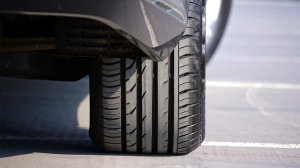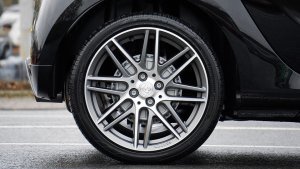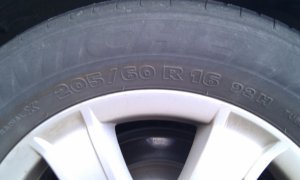Posted on 4/13/2017

Even just a pound or two of underinflation in your tires can be a problem. Why, though? There are several reasons. Fuel economy: If you ever rode a bicycle with a low tire, you know that it feels like you’re riding through wet cement due to the added rolling resistance. The same thing is happening with your car, and compromising your fuel economy. Over the course of 10,000 miles per year, that can add up to 150 gallons of gas or $500 out of your pocket!Handling: Low tire pressure means poorer control and longer stopping distances. At high speeds, in particular, this can be downright hazardous.Premature tire wear: Underinflated tires are under a lot of stress, especially their steel belts. Take a paper clip and work it back and forth until it snaps. Feel how hot it gets when the metal is stressed? The same thing happens with the steel belts in your tires, which are already heating up anyway due to normal wear. This heat and stress will cause uneven tread wear a ... read more
Posted on 3/16/2017

1. For performance and handling, the trend has long been toward fatter tires with a bigger footprint. That’s starting to change, though. Skinnier tires mean lower rolling resistance and better fuel economy, as well as a smaller aerodynamic profile. While fatter tires do handle better, tire engineers are making up the difference by designing skinny tires with a stickier tread formulation for traction and cornering ability.2. Static electricity used to be a real concern for vehicles; if you’re old enough, you may remember seeing station wagons with a “ground strap” dragging along the pavement. It’s become a concern again, with newer tread compounds cutting back on the amount of carbon black in newer tires. The solution? Many tires are now designed with an “antenna strip” of more conductive material down the center of the tread, providing a positive electrical contact between tire and pavement.3. Like with cars, tire manufacturers are doing everyt ... read more
Posted on 2/9/2017

We know that a lot of drivers are working pretty hard to make a dollar go farther and that the outlay for a full set of four tires – even inexpensive tires – can be considerable. That’s why we run across drivers pretty often who ask if it’s okay to just replace a pair of tires, then buy the other pair when they can afford them.The answer is…yes, but…You’ll really need to pay attention to the size of the set of tires that you’ve already got and go with that exact same size of tires for your new pair. Having mismatched sizes of tires on your vehicle can result in squirrelly and unpredictable handling and ride quality. If your existing tires are all-season, go with all-season tires. If they’re winter tires, go with winter tires. Ideally, you should even have the same tread pattern and design on the new tires.Also, the new tires will need to go on the rear, and you can then take the tires that have the most tread left and put them ... read more
Posted on 1/12/2017

So your vehicle’s been sitting for a while…you get in it, start the engine and pull out of the driveway when you notice a hard, rough (but very regular) vibration that only gets worse with speed. It doesn’t feel like it’s coming from the driveline or suspension – so what is it?It could be that the tires have developed flat spots.With the weight of the vehicle pressing down on the tires for long periods, a section of the rubber and belts can become softer (or harder) than the rest of the tire. This can be exacerbated by cold weather, or just by parking on a cold concrete floor.Low-profile tires with short sidewalls can be more prone to flat-spotting, as can tires with an H or higher speed rating. In most cases, you can just grit your teeth and drive and the flat spots will work their way out of the tires…but not always. In some severe cases, the flat-spotting is permanent.So, what can you do?There are all sorts of old-wives’-tales about parking ... read more
Posted on 12/15/2016

Ever wonder what the designations stamped on your tire sidewall actually mean? We’d like to break it down for you.Let’s take for instance, “P195/60R15 87S”. This is a full service description of a tire.In this case, “87S” denotes a tire’s load capacity and speed rating. The higher the number, the greater the load capacity – an 87 load capacity means that tire can support 1,201 pounds. Speed ratings range from L (75 mph) through V (149 mph), and an S speed rating means the tire is good for 112 mph. W, Y, and Z-speed rated tires are available for extreme performance cars and are rated as high as 186 mph.As for the rest of the information:--“P” denotes Passenger Tire--195 is the tire’s width from sidewall to sidewall... in millimeters--60 is the aspect ratio... the proportion of the height of the tire cross-section as compared to the width of the tread area--“R” stands for Radial construction--15 is the whe ... read more